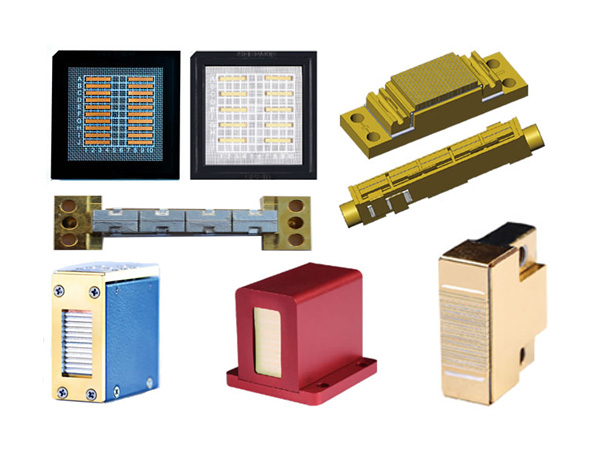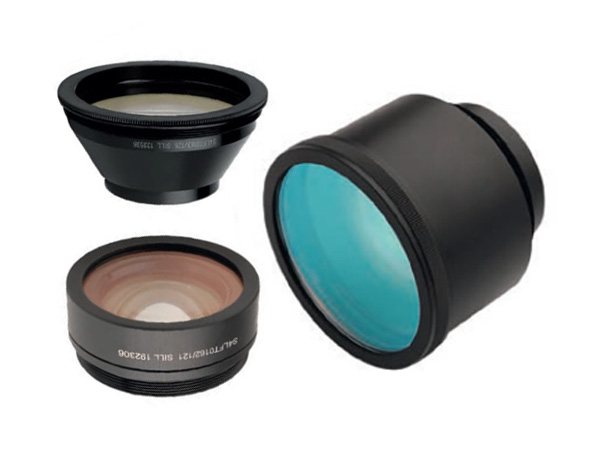Introduction and application analysis of laser cladding remanufacturing technology
With the continuous development of modern science and technology and industry, the working environment of the parts tends to be more and more complex, the surface performance requirements are more and more high, so the parts scrap rate increased greatly. Usually because of surface failure and scrap parts are: rotor blades, shaft parts, gear parts, molds and so on.
In the overall performance of the parts to meet the conditions of the working conditions under the condition of only surface damage to the parts can be repaired. If the parts can be repaired due to incorrect processing or service damage caused by scrapping, not only can save huge economic and time losses, but also improve the utilization of resources, in line with China's sustainable development strategy.
Currently, there are laser cladding, vacuum brazing, vacuum coating, tungsten inert gas welding (TIG) and plasma cladding repair methods. Laser cladding is according to the requirements of the working conditions of the workpiece, cladding a variety of design components of metal or non-metal, the preparation of heat-resistant, corrosion-resistant, abrasion-resistant, oxidation-resistant, anti-fatigue, or optical, electrical, magnetic properties of the surface cladding. Laser cladding is a kind of rapid cooling process, the heat input to the repaired workpiece during the cladding process is small, the heat-affected zone is small, the cladding layer organization is fine, and it is easy to realize the automation, etc. Therefore, the use of laser cladding to repair the rotor and other parts has greater advantages than other methods. Laser cladding technology solves a series of technical problems such as thermal deformation and thermal fatigue damage that are unavoidable in the process of traditional electric welding, argon arc welding and other thermal processing, and also solves the contradiction between the cladding layer and the substrate with poor bonding strength in the process of traditional electroplating, spraying and other cold processing, which provides a good way for surface repair.
Process Introduction
Aiming at the mechanical parts with wear, corrosion, creep, fatigue and fracture failure, the laser cladding technology is used to synchronize the alloy powder into the molten pool, and the cladding layer with special properties is formed by rapid solidification. The cladding layer is free of porosity and crack defects, with hardness ranging from 20 to 60 HRc, which meets the requirements of various working conditions and performance. It is suitable for cladding/remanufacturing of all kinds of complex shapes and large parts, restoring the size and performance of the failed parts, upgrading the surface performance, and prolonging the service life.
Process characteristics
1、Low heat input, small heat-affected zone, small deformation, only a small amount of machining;
2、Reduce the loss of alloy material;
3, dilution rate of less than 1%, can maintain the specific properties of the fusion cladding layer;
4, flexible, automated, short processing cycle, low cost, performance can be better than new products;
5、Metallurgical bonding with the substrate, with high bonding strength;
6, the use of special alloy powder, cladding layer can have wear-resistant, corrosion-resistant, fatigue-resistant and other characteristics;
7, the organization of the cladding layer has a complete fine-grained structure, with excellent strength and toughness.
Laser cladding application analysis
Rotor blade repair
Rotor blades, also known as dynamic leaves, are blades that rotate with the rotor at high speed, realizing the energy conversion between airflow and rotor through the high-speed rotation of the blades. Rotor blade to withstand a large mass inertia force, large aerodynamic force and vibration load, but also to withstand the corrosion and oxidation of the environmental media, as well as high-speed operation of small particles of the erosion, but the processing is more difficult, the turbine rotor blade but also in the high temperature state work. Rotor blade is directly affect the engine performance, reliability and life of the key parts, and its working conditions are very harsh and easy to damage, so the requirements for the material performance has also greatly improved, while increasing the economic cost of materials, but also for its repair to bring a broad market. The application of laser cladding process on rotor blades has been well studied, which also provides a favorable premise for its application in repair.
Repair of shaft parts
Usually the main reasons for the failure of shaft parts are shaft deformation, shaft fracture, shaft surface failure. Studies have shown that the damage of shaft parts such as generator rotor shafts and various transmission shafts is mainly wear-based. Among them, shaft deformation, shaft fracture is not repairable, while wear-based surface failure can be repaired. The use of high-power laser cladding repair technology can be in the shaft parts surface failure, laser cladding a layer of iron-based alloy material, so that the cladding alloy layer of the surface of the parts have good mechanical properties, will be scrapped parts to be used again.
Repair of mold class
Molds play an important role in casting molding and plastic molding processing, its manufacturing process is complex, long production cycle, high processing costs. Therefore, the failure of the mold repair and reuse, undoubtedly has significant economic benefits. The service life of the mold depends on the anti-wear and anti-mechanical damage ability, once excessive wear or mechanical damage, must be repaired in order to resume use. Laser cladding has become a research hot spot for repairing molds, which has attracted much attention from scholars at home and abroad.
Laser cladding to achieve the surface wear of the mold repair method can be summarized as follows: a high-power laser beam with a constant power P and hot powder flow at the same time incident on the surface of the mold, part of the incident light is reflected, a part of the light is absorbed, the instantaneous absorbed energy exceeds the critical value, the metal melting melt pools, and then quickly solidified to form metallurgical bonding of the cladding layer. The laser beam scans back and forth, line by line and layer by layer, to repair the mold according to the route given by the CAD secondary development application. In particular, the repaired mold requires little or no reworking.
Application Fields
Applied to electric power (turbine rotor, blades), mining (gears, drills, hydraulic rods), machinery (shafts, gears), petrochemical (turbine discs, rotors, oil pusher rods), ships (crankshafts, engine blades, camshafts), locomotives (shafts, turbine blades, bogie, pistons), molds (stamping molds, forging dies, die-casting molds) and other industries, the quality of the products is reliable, with a good The quality of remanufactured products is reliable and has good economic and social effects.
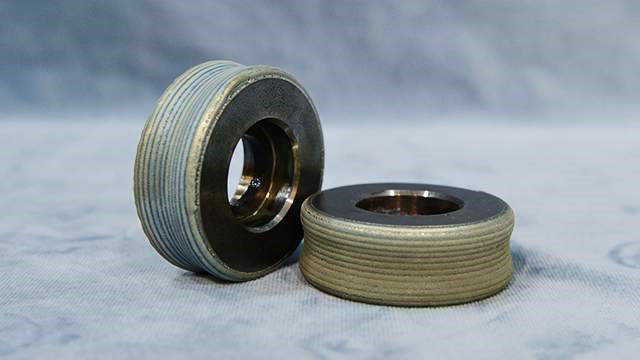
The ultra-high-speed laser cladding technology mentioned in the article is also divided into outer wall laser cladding technology and inner wall laser cladding technology.
Ultra-high-speed laser cladding is mainly used for the rapid preparation of corrosion-resistant, wear-resistant or other special performance coatings on the surface of shafts, disks and other parts, such as cylinders, columns, rollers, spindles, brake pads, etc., which are in demand in a large number of applications in many industries, such as coal machinery, transportation, steelmaking, offshore platforms, drilling and mining and heavy machinery, etc. Not only for the manufacture of new parts, but also for surface repair of in-service parts and in the manufacturing. Not only for the manufacture of new parts, but also for the surface repair of in-service parts and in manufacturing.
Internal laser cladding is mainly used for the preparation of wear- and corrosion-resistant coatings for the internal bore and wall of parts or for rapid laser repair. By equipping different optical systems, it can also be used for processing of blind holes at the end of pipe fittings by tilting the laser and powder at 45°; or rotating the inner wall optical head by equipping motors, which is used for vertical cladding of heavy parts or parts that are not easy to be rotated; and it can also be used for laser repairing and welding of parts in narrow and restricted positions. There is a huge demand for these machines in many industrial fields such as coal machinery, drilling, energy, heavy machinery, aerospace and so on.
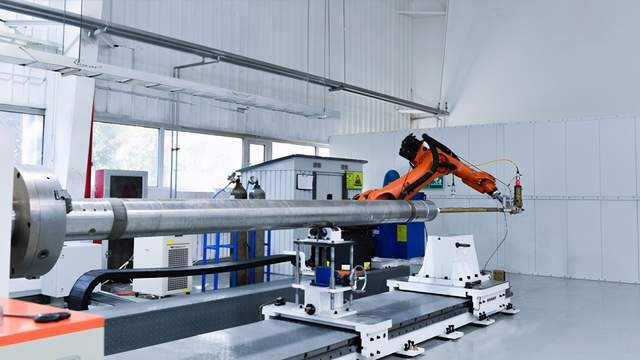
For the diversified processing needs of enterprises, the laser processing system usually needs to be customized, taking into account the functionality of the product as well as the input cost. Based on years of experience in hardware design, Wuhan Sintec Optronics adopts modular design concepts to formulate the optimal equipment manufacturing program, provide reasonable combination of core components, motion mechanisms, quality monitoring, application software and other upgraded space, while providing supporting laser processing process verification services. Including small, super-large, single function, multi-function composite equipment development.
In addition to the company to provide customers with batch laser processing services, can also provide customers with on-site production line production and processing services, to provide materials, processing, performance evaluation, before and after the convergence of the entire production chain of technical support, without the need for customers to carry out a high amount of equipment investment or employment of professional staff.
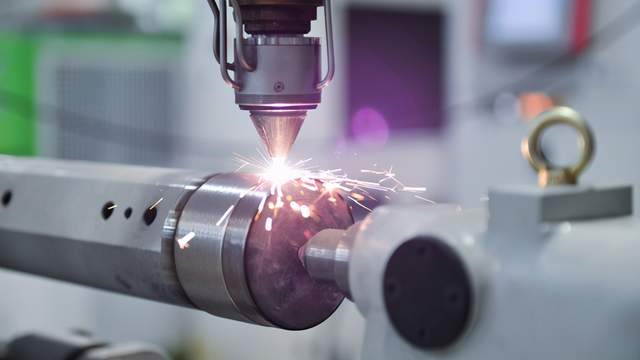
 English
English Français
Français Deutsch
Deutsch euskara
euskara Русский язык
Русский язык Italiano
Italiano Português
Português Nederlands
Nederlands Polski
Polski Greek
Greek Lietuva
Lietuva Türkçe
Türkçe 日本語
日本語 한어
한어 中文
中文 தாமில்
தாமில் فارسی
فارسی हिंदी
हिंदी Tiếng Việt
Tiếng Việt ภาษาไทย
ภาษาไทย Pilipino
Pilipino Indonesia
Indonesia தாமில்
தாமில்

